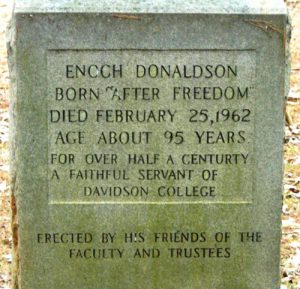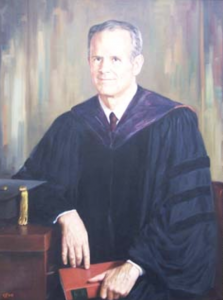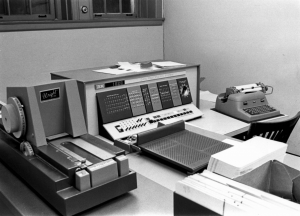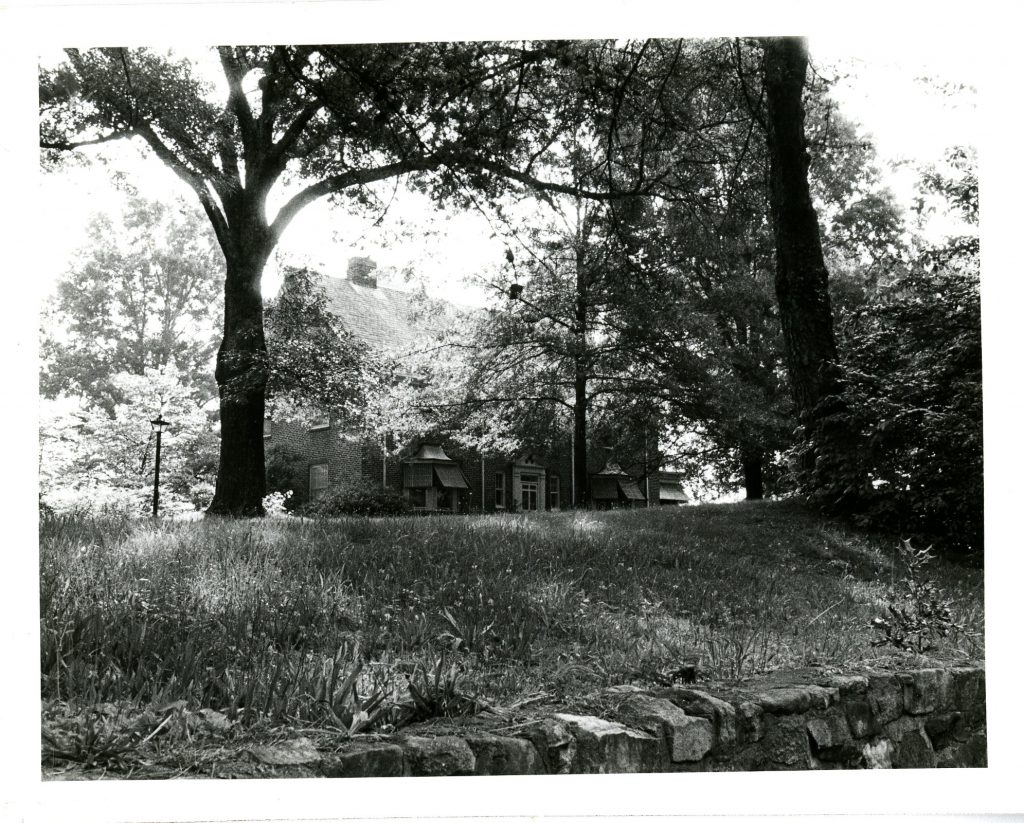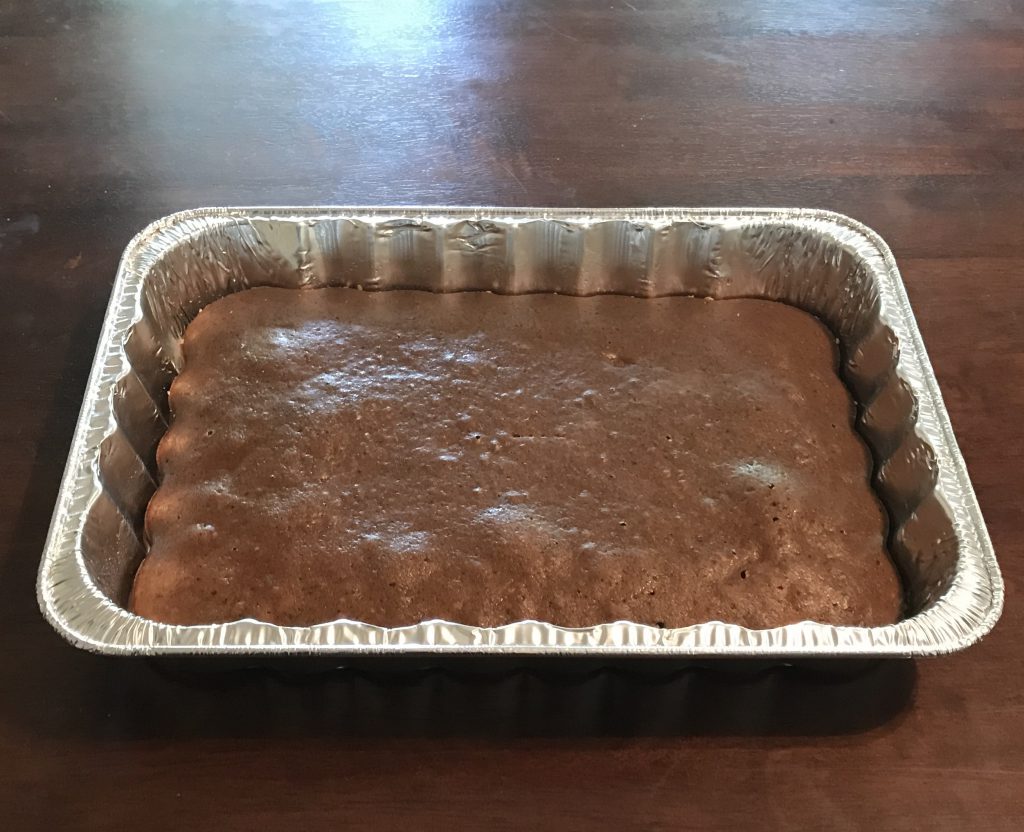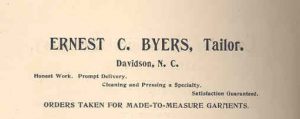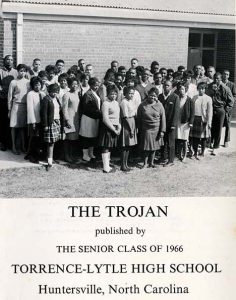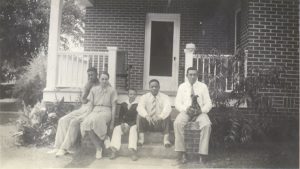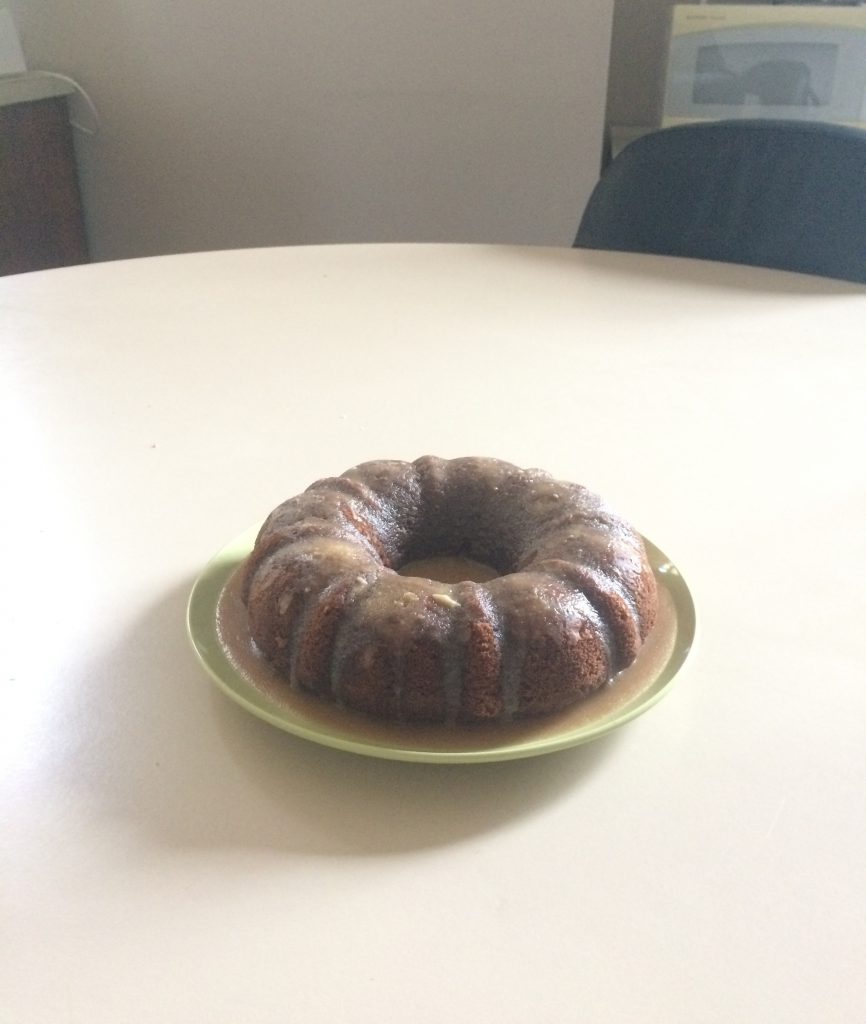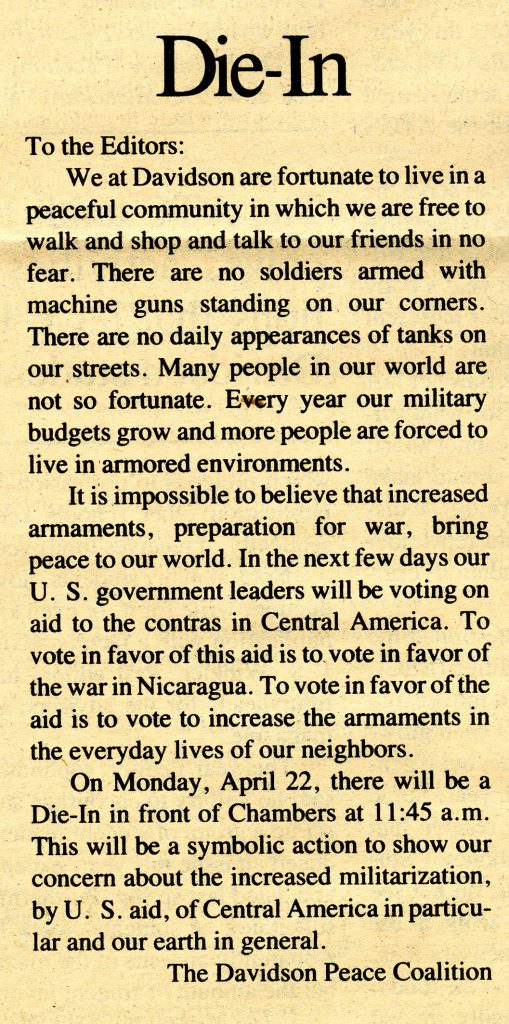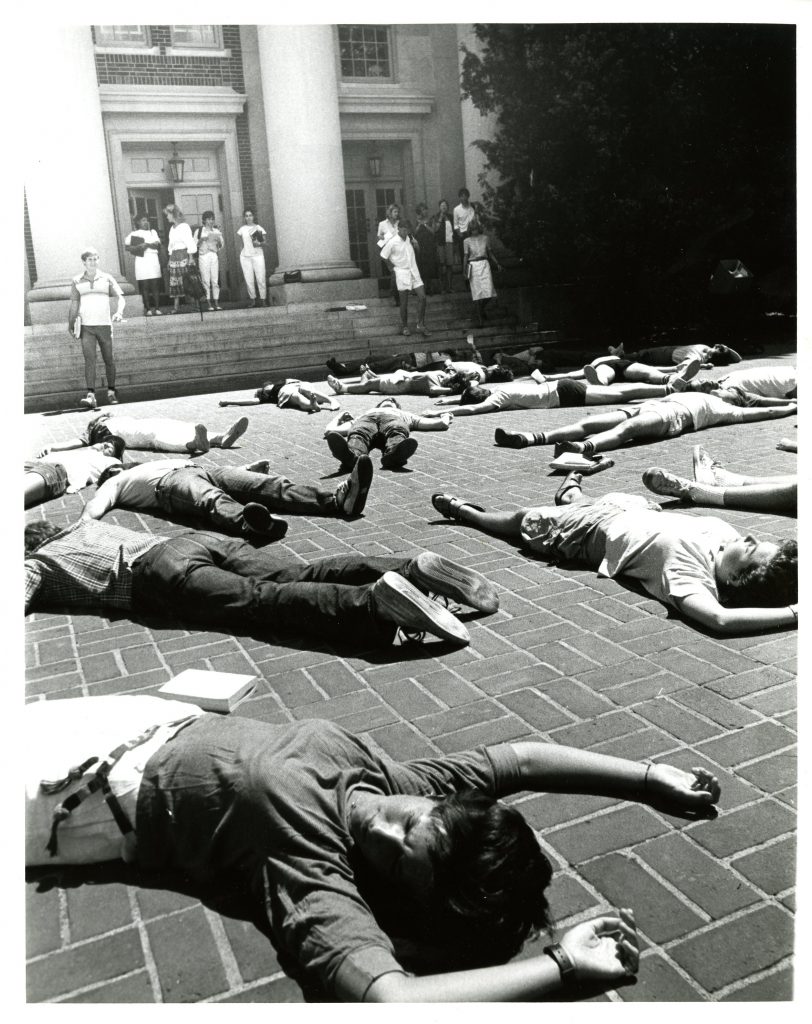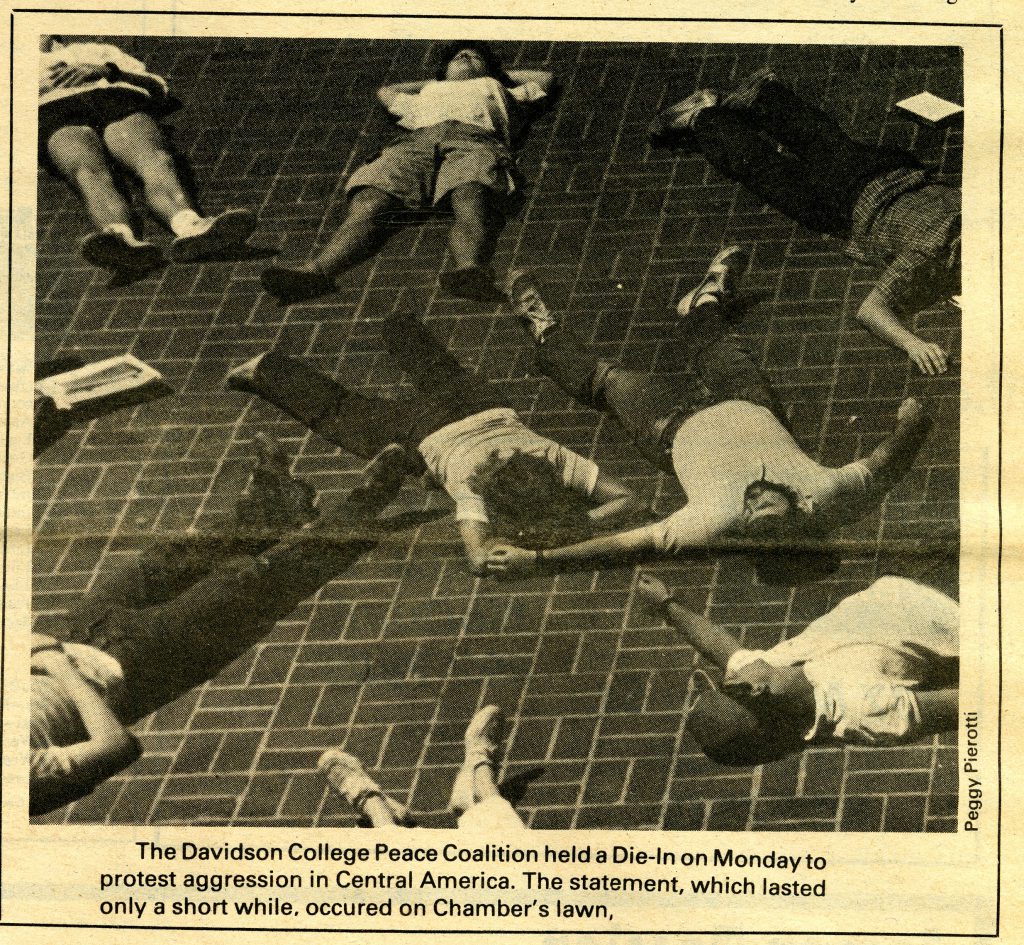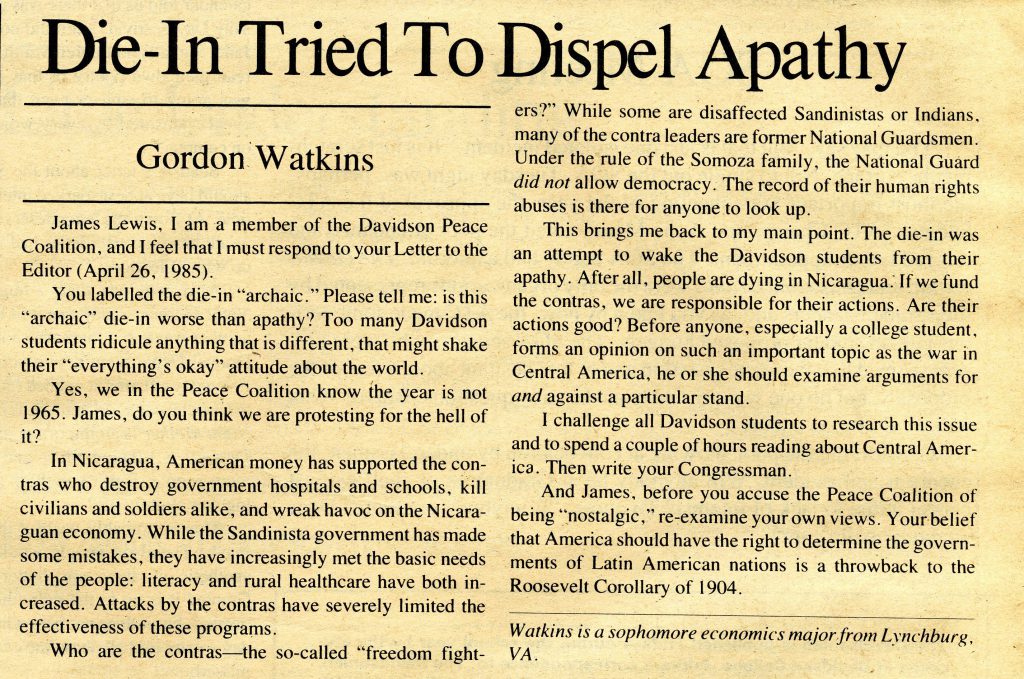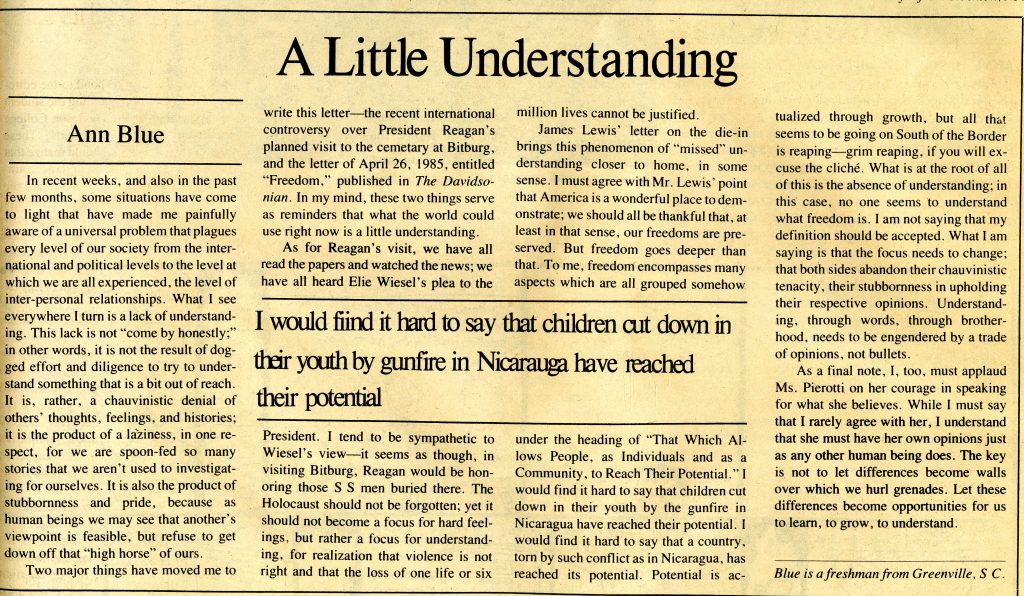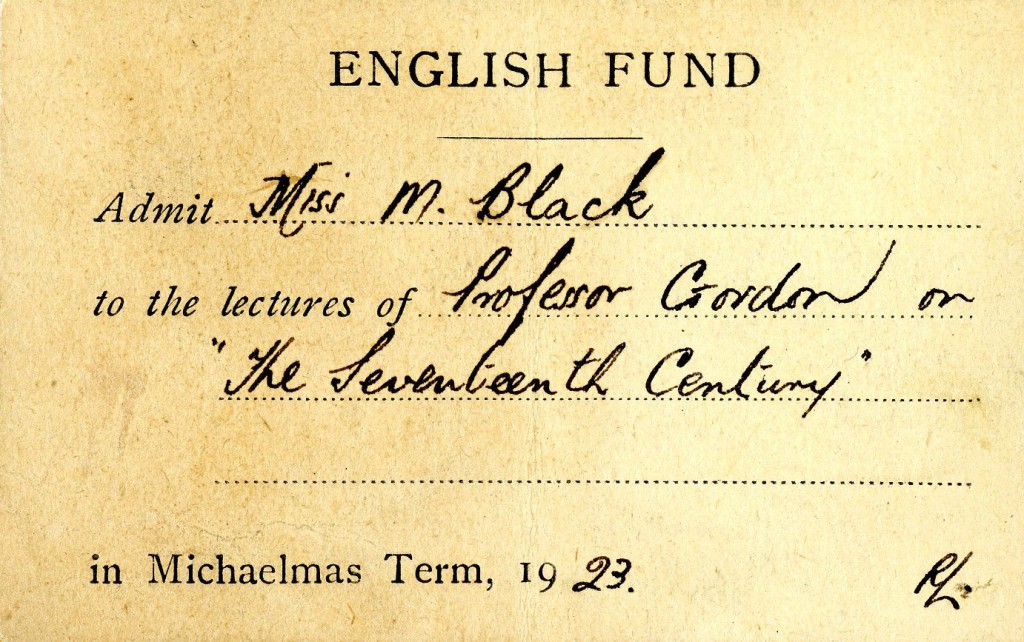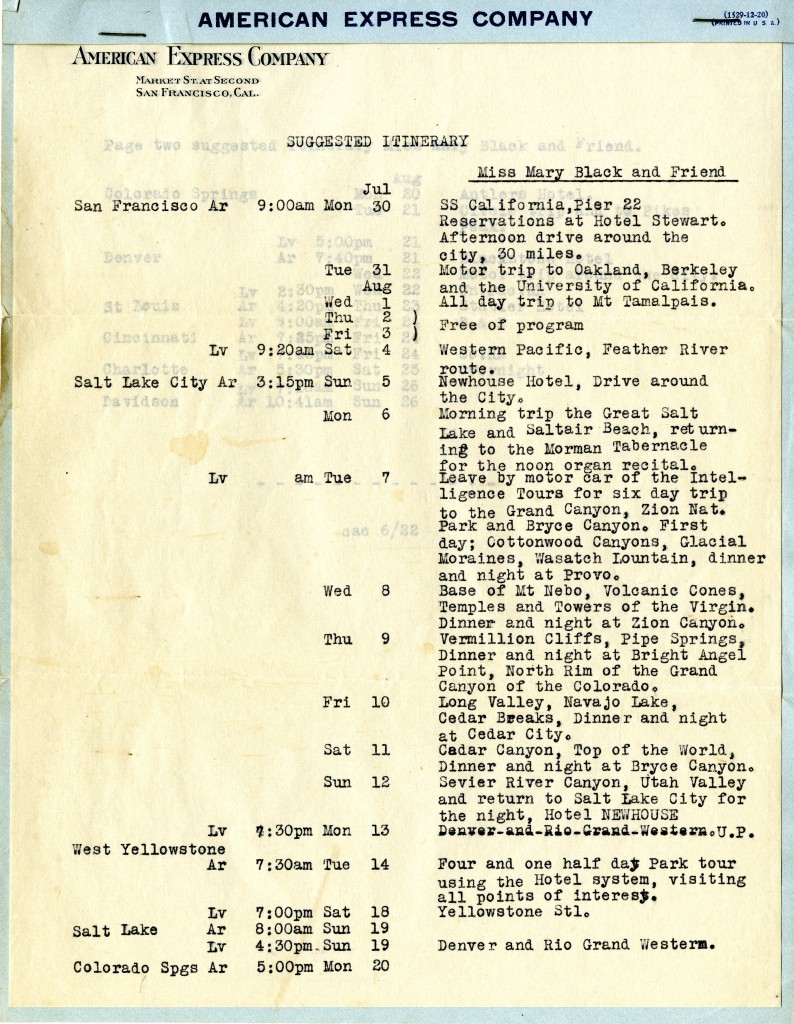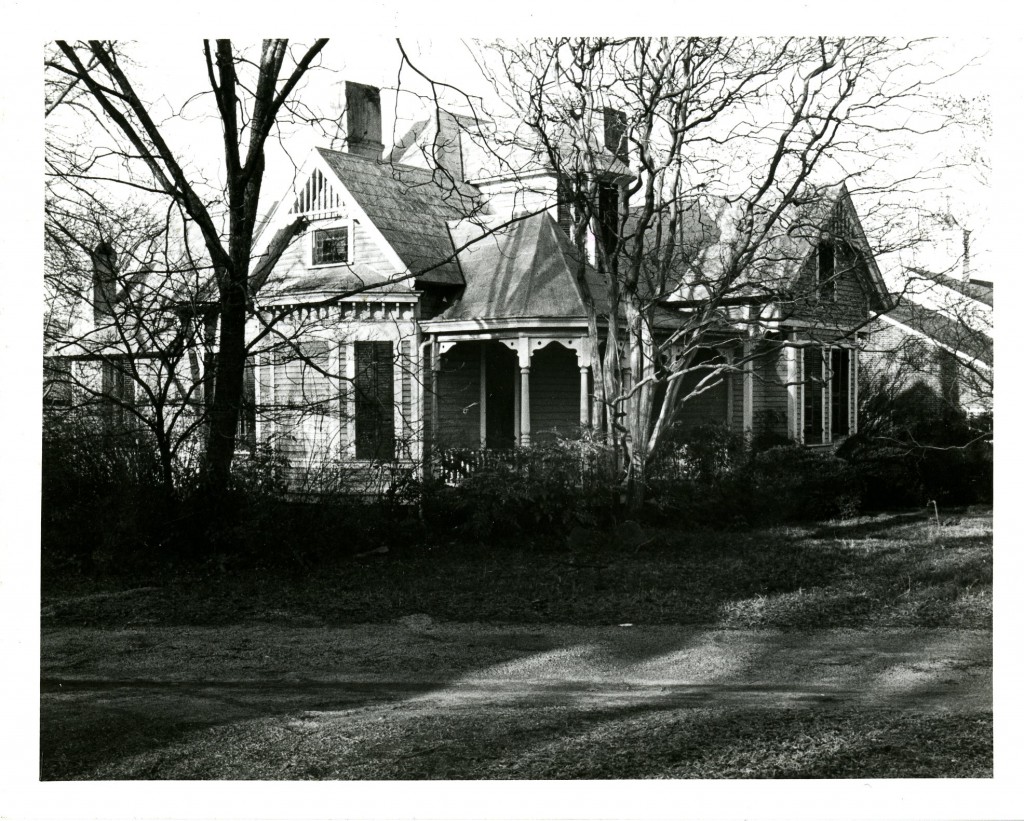In Fall 2019, Archives, Special Collections, & Community (ASCC) had the privilege of working with Dr. Rose Stremlau’s “HIS 306: Women and Gender in U.S. History to 1870” course. Over the course of a semester, students researched the history of women and gender in the greater Davidson, North Carolina area using materials in the Davidson College Archives and other local organizations. The following series of blog posts highlights aspects of their research process.
Tindall Adams is a current sophomore and prospective English major (with a History minor). She is involved with other organizations on campus such as Warner Hall and Planned Parenthood Generation Action.
Today, a little over half of the professors at Davidson College are female; however, this hasn’t always been the case. In 1896, Eulalia Cornelius became the first female teacher at Davidson.1 Although she was not a regular, full-time faculty member, Cornelius was evidently well-regarded by the Davidson community for her musical talents and teaching.
As a female teacher in the 1890s, Eulalia Cornelius was teaching during a unique and influential period of education history. In the late nineteenth century, society began to promote the notion that teaching functioned as an “extension of mothering”.2 Additionally, religious institutions also began to promote the idea that women were the “moral sex” in order to increase female church attendance and support of the church.3 During this period, the main function of school was to teach children moral values and women’s expected role was to raise children. Therefore, society increasingly viewed teaching as a natural and acceptable job for women.4 Specifically in North Carolina, where Eulalia Cornelius taught, southern Progressive men advocated for the higher education of women because they believed it could help spur economic progress in the post-Civil War South.5

The Davidson Archives currently has a program from a music recital given by Cornelius. Eulalia Cornelius not only gave private voice lessons to Davidson students, but to women who lived in the town as well. Therefore, all of her students were most likely white and were in a fairly well-off financial position if they could afford private music lessons. The program is nicely printed, and has a least ten different “pupils” performing at the recital. While there is no mention of this March 21, 1898 recital in newspapers from the time, there is mention of a Eulalia Cornelius recital in 1897 in the Statesville Record and Landmark newspaper. The paper highly praises Cornelius’ skills as a teacher.
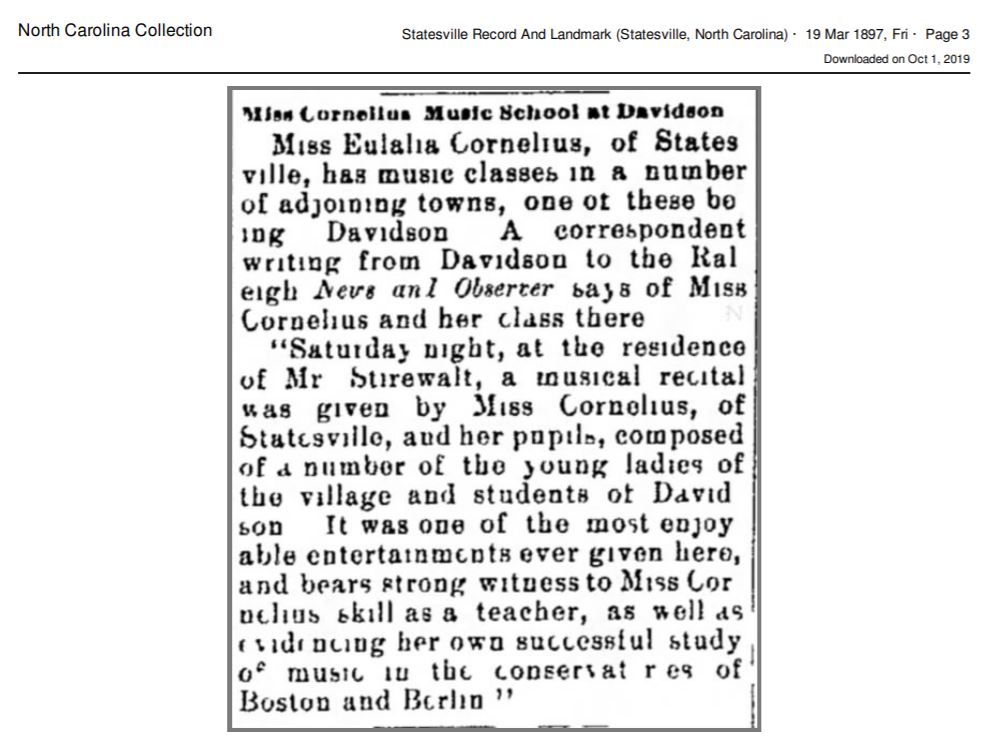
There is no mention of Cornelius in any Davidson College Faculty minutes from the late nineteenth century. Therefore, this recital program, which could initially seem trivial, brings light to an important part of women’s history at Davidson. Although she was not a full-time employee, Cornelius was one of the first women to teach at Davidson. This recital sheet, supplemented by many other newspaper articles praising her skills, gives her recognition of her success as a teacher.
Works Cited:
Cott, Nancy F. “Passionlessness: An Interpretation of Victorian Sexual Ideology, 1790-1850.” Signs 4, no. 2 (1978): 219-236.
Davidson Archives. “Active and Benevolent Ladies: A Short History of Women at Davidson College.” Davidson College Library. Accessed November 8, 2019. http://library.davidson.edu/archives/women/#staff.
Hoffman, Nancy. “‘Inquiring after the Schoolmarm’: Problems of Historical Research on Female Teachers.” Women’s Studies Quarterly 22, no. 1/2 (1994): 104–18.
Laud, Leslie E. “Moral Education In America: 1600s-1800s.” The Journal of Education 179, no. 2 (1997): 1-10. http://www.jstor.org/stable/42741719.
McCandless, Amy Thompson. “Progressivism and the Higher Education of Southern Women.” The North Carolina Historical Review 70, no. 3 (1993): 302–25.


